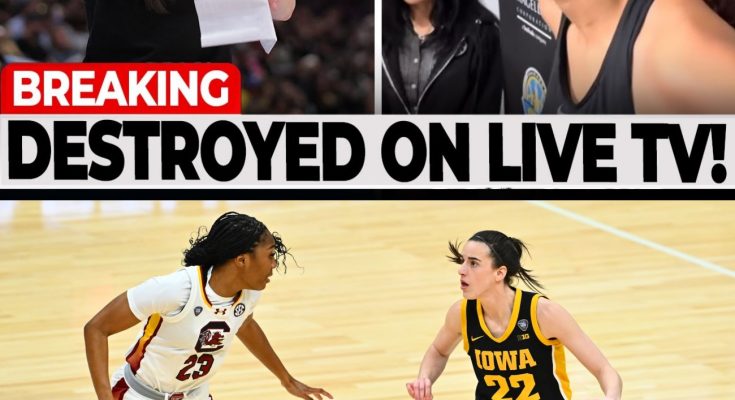Angel Reese’s United Center Collapse: Performance, Perception, and the Reality of WNBA Stardom
The anticipation was palpable in Chicago. The Sky—led by rookie Angel Reese, a college sensation turned pro—were set to play the Indiana Fever in the NBA’s largest arena, the United Center, on primetime national television. It was billed as a marquee moment, a chance for Angel Reese to prove that she could draw crowds, drive ratings, and perform under the bright lights—even in the absence of archrival Caitlin Clark, sidelined by injury. But the game that unfolded instead turned into one of the most scrutinized nights of Reese’s young career, revealing deeper truths about stardom, leadership, and the state of the WNBA.

A Star Alone in the Spotlight
For much of the season, the Caitlin Clark vs. Angel Reese narrative has driven attention to the WNBA like never before. Both rookies are household names, polarizing figures, and undeniable stars. But with Clark out due to injury and Indiana Fever coach Stephanie White also absent, Reese was the lone “headliner” left standing. This was her chance, and the league set the table.
The move to the United Center, with a capacity over 20,000, signaled big expectations. Social media buzzed about the Sky’s ability to pack the house and prove Reese’s own box office draw. But then came the reality check: the moment Clark’s absence was confirmed, ticket prices plummeted to as low as $3—a far cry from the sold-out fever dreams Clark regularly delivered.
Performance Under Pressure
Nearly 20,000 fans were in the stands, but what they saw was a Chicago Sky team unraveling and their rookie centerpiece struggling. Across 27 minutes, Reese managed just four points on two of seven shooting, missed multiple layups, and appeared visibly rattled under Indiana’s defense and relentless energy.
The numbers are hard to sugarcoat. Reese was blocked as many times as she scored, missed close-range shots, and never found a rhythm. Statistically, the entire Sky squad was outmatched, finishing with just 52 points—the franchise’s lowest total since 2011. But Reese’s struggles were the focal point, amplified by the stage and storyline surrounding her.
Comparisons and Contrasts
Criticism for Reese was swift and unforgiving. On social media, side-by-side clips contrasted her outings against the Fever with Clark’s usual box office dominance. Even the most charitable analysis can’t ignore this: without her rival on the court, Reese’s team struggled to sell tickets and to compete.
The issue isn’t just about one bad game. Against Indiana this season, the Sky have been outscored by a combined 62 points in two blowout losses. Reese, who has built a reputation on confidence and swagger, seems to fade against the Fever’s physicality and depth.
By comparison, Clark—when healthy—has repeatedly delivered in big moments: scoring in bunches, selling out arenas, and handling defensive pressure with composure. It’s little wonder her absence so dramatically deflated the night’s anticipation and ticket value.
Image and Reality: The Leadership Question
For all of Reese’s promotional success—her pregame fashion, media presence, and marketing appeal—a growing contingent of fans and analysts question her leadership and on-court reliability. The criticism is not simply about one bad night, but about a pattern of underwhelming play when expectations are highest.
Leadership, many argue, is measured not in soundbites or Instagram posts, but in stepping up when a team needs it most. For the Sky, no starter reached double figures, and the offense devolved into chaos. Reese, for all her gifts as a rebounder and interior presence, has yet to show that she can carry her team in crunch time or when the game plan collapses.
To her credit, Reese has acknowledged the pressure and her desire to be a face of the league. “I’ll look back in 20 years and say—yeah, it wasn’t just one person,” she told media, referencing (without naming) Clark’s role in raising women’s basketball’s profile. But actions on the court remain the ultimate test.
Beyond the Box Score: Team Dynamics and What Really Matters
Chicago’s collapse was about more than one player. Indiana’s defensive rotations, rebounding, and unselfish ball movement (20 assists on 27 made field goals) highlighted the team-first mentality that distinguishes contenders from pretenders. Kelsey Mitchell’s 17 points, plus major bench contributions from Ari McDonald and others, underscored Indiana’s depth.
Acting coach Austin Kelly (filling in for the Fever’s Stephanie White) praised his squad’s discipline and focus, remarking that “our best defense is when our offense is clicking.” Indiana not only won the boards but took away every area Chicago was supposed to own. For Reese and the Sky, it was a humbling night—and a coaching film on what professional poise looks like.
What Does This Mean for the WNBA’s Present—and Future?
Reese is only a rookie, and the learning curve from college stardom to professional leadership is steep. Her talent is real, particularly as a rebounder—she’s among the league leaders even after this game. But real stardom isn’t proclaimed; it’s proven in consistently strong performances and big moments. That’s what the WNBA’s new wave of fans expects and what the national spotlight now demands.
The Caitlin Clark Effect isn’t just hype—her absence, as seen in those $3 tickets, is a measurable dip in interest. That’s both an enormous opportunity for the whole league and, at the same time, a challenge for other stars like Reese to rise to the occasion. Rivalries sell tickets, but only if both sides are ready to deliver when called upon.

Where The Rivalry Goes From Here
The Fever’s blowout win without Clark, Cunningham, or their head coach cemented their place as a legitimate playoff threat and put the rest of the league on notice. As Clark nears her return, the onus is on Angel Reese—and the Sky—to prove that they belong in the rivalry’s next chapter.
For Reese, the road back to public favor is simple but not easy: less focus on pregame media, more grit on the floor. For Chicago, finding a consistent identity will be key. For the WNBA, it’s a lesson in the importance of substance over sizzle—and the reminder that the biggest moments demand the biggest performances.
Full Video:

